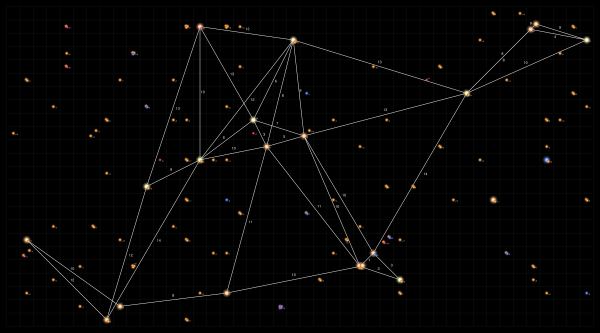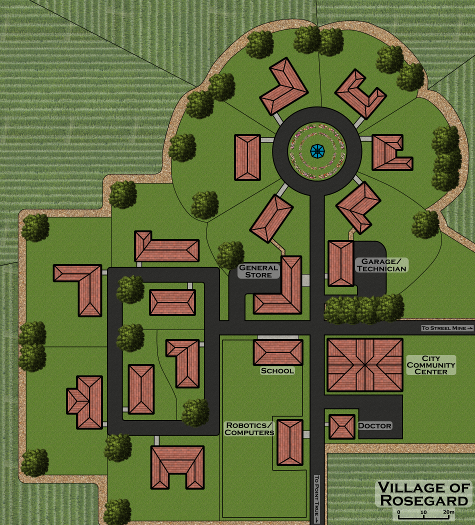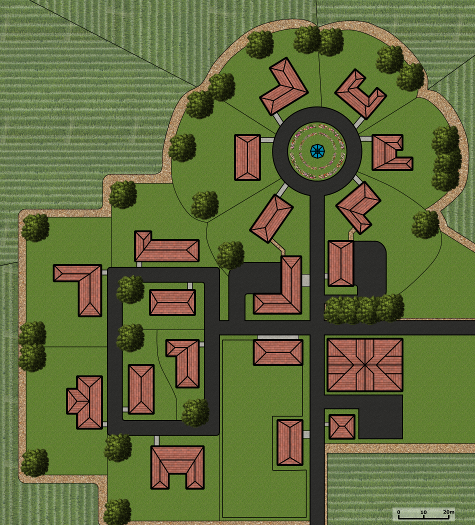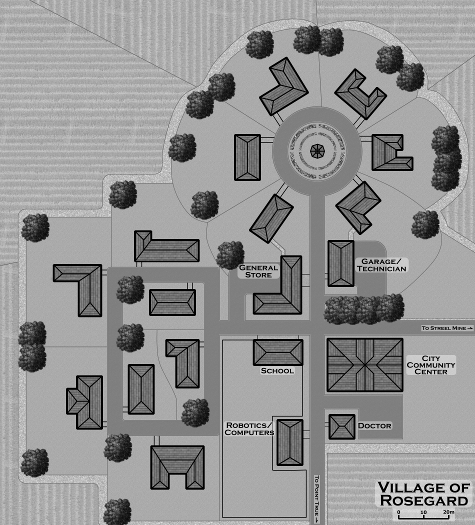I was going to start posting the designs for some new starships for Star Frontiers. However, since I’m building them with my custom starship construction system, I realized that some of the bits of information won’t make sense for those that are familiar with the standard system.
I’ve been working on this system off and on for years but it’s finally at a point where it is usable. While it’s possible to generate all the ships from the standard Star Frontier system, this system is a bit more flexible and allows for a wider range of ship designs. And the ships created can be dropped directly into the existing game alongside existing ships. At least in terms of boardgame statistics. The sizes of the ships are somewhat different.
So before I start posting the new ships, I thought I should at least provide an introduction to this new system. And I’ll do that by simply posting the Introduction section from the new rule system. I’m working on polishing this up and will be releasing it sometime in the future.
Knight Hawks Starship Construction 2.0
This is an alternate ship construction system for the Star Frontiers RPG. While all the components are the same as in the standard Knight Hawks rules, this system takes a more realistic approach to the construction of the starships that is based on the volume and mass of the ship’s components. While the original Knight Hawks system is based on picking a hull size and then limiting what the ship could do based on that, in this system you pick the components of the ship based on what you want it to do and the capabilities and performance you want it to have. The hull size is then just a function of the ship’s systems.
From the perspective of both the Knight Hawks board game and general role playing, the resulting ships are nearly identical to those generated with the original Knight Hawks system. The differences are mainly in size and cost.
The main differences are as follows:
- Life support systems have more variety, are more detailed, cost more, and are bulkier than in the Knight Hawks rules. They also scale more realistically as you increase the number of beings supported.
- Hulls have more variety and are more expensive. In addition to the standard hull, we introduce three additional hull grades that have varying cost, mass, and hull points. Instead of the cost of the hull scaling linearly with the hull size of the ship, it now scales with the volume of the ship.
- Engines are more appropriately scaled. Each engine type and size now has a thrust rating. This, combined with the mass of your ship, gives you the acceleration that the ship can achieve. The engine classes are scaled appropriately to provide proper amounts of thrust to move the bigger ships. The costs are also scaled appropriately to the thrust provided by the engines. Fuel costs also scale with engine size.
- These ships are more expensive. This is primarily due to the changes in the cost of hull, engines, and life support. All three of these systems are more (and in some cases much more) expensive than the same systems in the Knight Hawks rules. This was done for a variety of reasons but primarily to make the costs scale realistically with the size and capability of the systems as they grow larger.
- Hull size is computed a little differently. While it still scales exponentially with the volume of the ship, it has now been modified so that the hull size and volume are mathematically related instead of being arbitrarily scaled. This has the result of making the smaller hull sizes larger than the corresponding hull size from Knight Hawks while the larger ships from this system are actually smaller than a ship of the corresponding hull size from the original rules. For example, an average HS 1 ship in the new system is 64 cubic meters in volume which is double the size of a HS 1 ship in the original rules. And HS 1 in this system goes up to 216 cubic meters which is nearly half the size of a HS 2 ship from the original. On the other end, an average HS 20 ship in the new system has a volume of 512,000 cubic meters which falls between HS 11 and 12 in the original Knight Hawks system. [Note: This is something I’m not completely happy with and am still working on.] Additionally, there is no upper limit on hull size. You can build your ship as big as you have the budget for.
- One final difference is that the definition of a cargo unit has been standardized to a specific volume. This is more realistic than the Knight Hawks system of one cargo unit per HS since in that system you could increase the HS by 2 and double the volume but only increase the cargo capacity by 2 not doubling it even though the ship was vastly larger. This change eliminates that discrepancy. It also means that ships will have tens to hundreds to even thousands of cargo units of hauling capacity. A future work will redefine the cargo tables to give prices and volumes to work with this new system.
Unless otherwise described, assume that all systems are identical to the systems described in the original Knight Hawks rules.
So what will I notice in the new listings
All of the old bits of information about the ships are still there. What has been added are a few new descriptors related to mass, volume, and fuel consumption.
Now instead of just listing the hull size, the actual total volume of the ship is provided. There are two parts to this. One is the overall volume including the cargo areas if any, and the other is the “inhabited” volume, or the part of the ship where the crew lives and works that doesn’t include the cargo hold. For vessels that are not primarily freighters these numbers are nearly identical.
In addition to the total volume, the mass of the ship, in tons, is provided. Again this has two values, one for the ship with the cargo areas empty, and another for the ship with a full hull (which assumes 2 tons per cubic meter of cargo). The ship’s ADF value is computed based on this full-loaded mass volume. For most ships there isn’t a different between that and the unloaded value. This isn’t true for freighters as unloaded, their engines can move the ship at much higher accelerations.
Finally, each listing provides a values labeled “ADF per fuel load”. This value represents the total number of ADF that can be achieved by fully burning through a load of fuel in all of the ship’s engines and is related to the fully loaded ADF value. These ships are actually more fuel efficient than in the original rules. It takes 1000 ADF to make an interstellar jump (and stop at your destination). Since most ships can run at an ADF of 2 or more, they only need a fraction of their fuel to reach jump speed and thus can make multiple jumps on a single load of fuel as long as they don’t run into trouble along the way and have to do a lot of maneuvering.
Playtesting
These rules are definitely a work in progress. I’m starting up a play-by-post game that will involve a lot of ships and traveling so I plan on testing these rules out extensively during that game.
That’s the basics. For my next few posts I’ll be sharing some ships that the PCs will have the option to buy as their starting vessel in that play-by-post campaign that are designed using this new system.
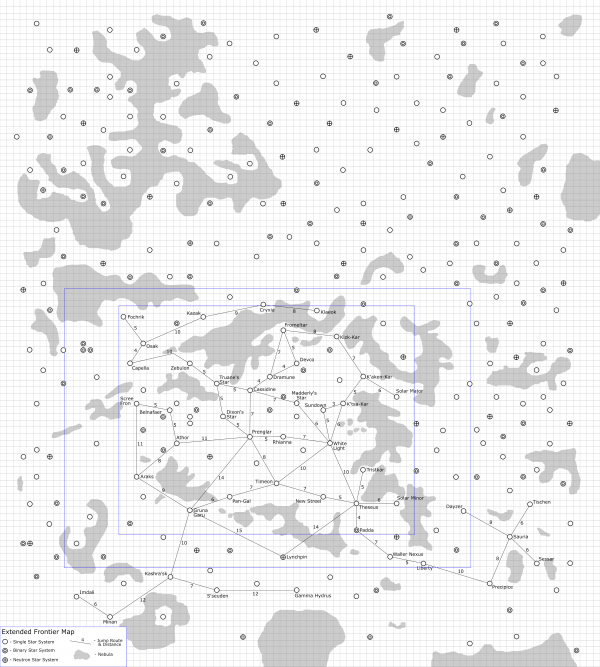
 ) that are known to the UPF, MegaCorps, pirates, or the sathar. If I was using it for my game, there are even parts of this map that I would not use (i.e. the MegaCorp planets, and S’sessu and Saurian space) at least not to begin with as those are discovered in game. I’ve set the map up with all these bits and pieces on separate layers so that I can turn them on and off as needed.
) that are known to the UPF, MegaCorps, pirates, or the sathar. If I was using it for my game, there are even parts of this map that I would not use (i.e. the MegaCorp planets, and S’sessu and Saurian space) at least not to begin with as those are discovered in game. I’ve set the map up with all these bits and pieces on separate layers so that I can turn them on and off as needed.